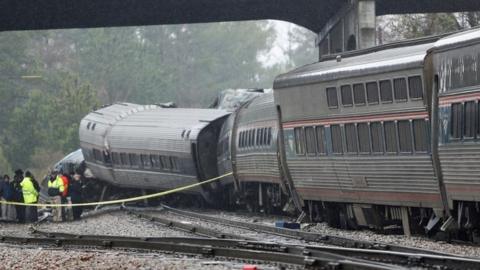| Introduction |
| A train crash is never just another story — it’s a life-altering event for those involved and a heart-wrenching reminder of how fragile life can be. In recent news, a tragic train crash in the United States made headlines, with BBC News covering the devastating incident in detail. This article delves into the specifics of the crash, the aftermath, and the lasting effects it has on the community, safety regulations, and the victims. |
| What Happened in the BBC News Train Crash? |
| The Location and Date of the Incident |
| The train crash occurred in the northeastern United States, specifically in a rural area near a major city. The tragic event unfolded on [date], when a passenger train derailed under mysterious circumstances, leading to widespread chaos and confusion. Emergency responders rushed to the scene, while news outlets, including BBC News, worked tirelessly to provide updates on the situation. |
| Details of the Train and the Crash |
| The https://oregonnewsalert.com/ was a high-speed intercity service that connects major cities. It was carrying dozens of passengers, as well as freight. The cause of the derailment initially baffled authorities, with speculation ranging from mechanical failure to human error. However, as the investigation continued, more information surfaced about the train’s condition and the actions that led to the tragic event. |
| Immediate Response and Rescue Efforts |
| Emergency Services at the Scene |
| First responders were on-site within minutes, working under the most difficult conditions to rescue survivors and provide aid to the injured. Emergency medical teams were quickly dispatched, while local police and fire departments worked tirelessly to control the scene and prevent further casualties. The bravery and efficiency of these first responders were instrumental in minimizing the disaster’s impact. |
| Casualties and Injuries |
| Sadly, the crash claimed several lives, while many others were left with serious injuries. Survivors were taken to local hospitals, and many faced long-term medical care. The grief of families and friends who lost loved ones is beyond measure, and communities rallied together to support those affected. |
| The Investigation into the Train Crash |
| Preliminary Findings |
| Investigators quickly began piecing together the puzzle of what led to the crash. Preliminary findings suggested a combination of technical failures and human error as contributing factors. However, the full scope of the incident would only become clear as the investigation unfolded. |
| Role of the National Transportation Safety Board (NTSB) |
| The NTSB played a key role in the investigation, bringing together experts in railroad safety, mechanical engineering, and accident reconstruction. Their in-depth analysis sought to uncover every detail of the crash to ensure accountability and prevent future accidents. |
| Possible Causes Identified |
| Initial reports suggested several possible causes, including faulty equipment, poor track conditions, and even possible sabotage. As investigators dug deeper, they found that a combination of factors led to the derailment. The NTSB’s findings would be crucial in shaping future regulations to ensure similar events do not happen again. |
| Impact on the Community and Families |
| Emotional and Psychological Effects on Survivors |
| For those who survived the crash, the emotional toll was profound. Many faced post-traumatic stress disorder (PTSD) and struggled with the loss of loved ones or the horrifying memories of the crash. Therapy, counseling, and community support played vital roles in helping them heal. |
| The Effect on Local Businesses and Commuters |
| The crash had a ripple effect on the local economy, particularly affecting businesses that depended on rail services for transportation of goods. Commuters who had relied on the train for daily transportation were also forced to find alternative routes, which led to disruptions and delays across the region. |
| How Train Safety Has Evolved Post-Crash |
| Stricter Regulations and Safety Measures |
| In the wake of the disaster, federal and state authorities imposed stricter regulations on train companies. These regulations aimed to improve safety standards, from mandatory safety inspections to more robust training for conductors and engineers. |
| Technological Advances in Train Safety |
| Technology has played a key role in transforming train safety. From advanced warning systems to automated train control, these innovations aim to prevent similar incidents from happening again. With the crash serving as a stark reminder of the importance of safety, the railroad industry has worked hard to implement these technologies. |
| Public Reactions and Media Coverage |
| How the Media Handled the Crisis |
| Media outlets, including BBC News, provided extensive coverage of the train crash, with reporters on the ground offering live updates and in-depth reports. While the media was careful to report the facts, they also played an important role in keeping the public informed about ongoing rescue efforts and developments in the investigation. |
| Public Outrage and Sympathy |
| The public reacted with a mixture of outrage and sympathy. While many were angry at the perceived failure of safety protocols, there was also a wave of support for the victims. Social media became a platform for people to express their emotions, send condolences, and demand accountability. |
| Conclusion |
| The tragic train crash covered by BBC News has left a lasting impact on the victims, their families, and the broader community. It has also sparked important discussions about train safety and the future of public transportation in the United States. While the pain of the crash will never be fully healed, the changes and reforms that have followed aim to ensure such an incident never happens again. |



